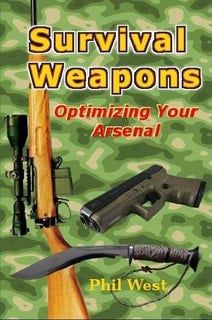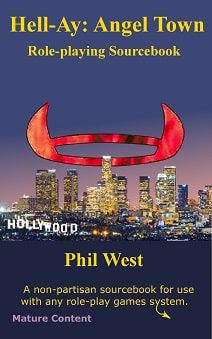By the Author of the Scrapboard : | |
|---|---|
 | Attack, Avoid, Survive: Essential Principles of Self Defence Available in Handy A5 and US Trade Formats. |
 | |
 | Crash Combat Fourth Edition Epub edition Fourth Edition. |
 | |
 | |
This is an old article. For a more recent look at the subject see Expeditionary Warfare in the Modern World.
The future will see US forces deployed more and more in an expeditionary role. It will also see a much greater need for versatility.
Much of the official current writing on this topic assumes that there will be a friendly seaport or airfield at which the US forces can establish themselves. Obviously such a situation can never be guaranteed.
An amphibious “forced entry” will be the responsibility of the USMC. Currently the navy lacks sufficient shore bombardment capability to support such a landing. The USMC itself lacks the specialist equipment that will be needed to overcome the obstacles, minefields and fortifications likely to be encountered on defended beaches.
Airborne landings will obviously be the responsibility of the army's 82nd Airborne Division. Providing this formation with an air-mechanized capability would allow paratroopers to land in weakly defended areas then use its mobility to manoeuvre and concentrate to seize objectives.
Once an air-bridgehead has been created, the paratroopers must be relieved or reinforced by other units. The most useful units for this task are non-mechanized infantry and medium mechanized formations.
Non-mechanized infantry can fight in any terrain and have the merit of strategic mobility.
Potentially, most of an infantry company can be deployed by a single 747 airlift so while a mechanized unit may have more combat power ,sending non-mechanized troops ahead first produces a quicker initial build up of strength and may be preferable in many situations.
Such infantry can supplement the mechanized forces and in certain types of terrain or operation prove more useful.
The military is used for everything from major combat operations (major theatre warfare or MTW) to humanitarian aid (HA) or disaster relief.
Between these two extremes are various operations such as counter-terrorism, counter-insurgency, peacekeeping and non-combatant evacuation.
The infantryman is often one of the most important force elements at any of these levels.
I'm personally wary of using the term “light” infantry since to many this invokes a certain limited mindset: that if a unit is “light” it, shouldn't have certain types of equipment, or at least not in high levels. Such thinking results in light infantry being moved by poorly protected HMMWVs in situations that warrant the use of armoured personnel carriers.
There is also a tendency by some to look on non-mechanized infantry as being “poorer” cousins because they lack organic combat vehicles.
The strength of the infantry is its versatility, flexibility and adaptability.
If anything, the army would become more effective if it increased its numbers of non-mechanized infantry while implementing provisions to provide such units with armoured transport when necessary.
“Straight-leg” infantry are most useful in jungle and MOUT operations, so need appropriate organic equipment for these tasks: shotguns, SMAW, Carl Gustav LAAW, M4s and plenty of M203s.
While an infantry unit should be capable of marching at 6mph, it must be drummed into officers that this should be avoided whenever possible under operational conditions.
One of the lessons of “Bravo Two Zero” is that if the terrain allows it, the enemy will use vehicles even if you chose not to.
In most parts of the world any population centre will have numerous motor vehicles that can be utilized by a smart infantry commander.
Other lessons of history are there if you look for them.
Many of the gains of panzer divisions in Russia could not be consolidated because the infantry divisions could not be moved up at a sufficient speed. Rail transport was too vulnerable, and motor transport always in short supply.
Equipping the unit with all-terrain bikes and ATVs will not compromise the unit's strategic mobility too much, but increase its tactical mobility considerably.
For modern infantry to be effective, the army must have available sufficient support elements for attachment as needed. These will include engineers, CBW units, assault gun-mortars, light or medium tanks, cavalry and CABs
Better still, reorganise the infantry to follow the MR type TOE that I've proposed and to patch such forces where necessary.
Another support unit that should be available are TABs.
To avoid confusion with Target Acquisition Batteries, I've suggested the alternate name of “Carrier Attachment Battalions (CAB)”.
CABs are M113 or heavy-IFV units without organic infantry.
One company from a CAB can move a battalion of non-mechanized troops.
Using tracked APCs instead of trucks improves both the infantry's mobility and protection.
The CAB has more potential than being just a transport unit with APCs instead of trucks.
Even when not carrying personnel or supplies, the CAB can perform an ACAV type role. It can patrol, scout or act as a mobile reserve. In urban operations ia CAB can provide perimeter defence or be used to evacuate casualties and non-combatants.
Straight-leg infantry should be fully familiar with both M113/Heavy-IFV and helicopter operations as part of their basic training.
Most CABs will be support assets, but some divisions such as the 82nd Airborne may have an organic CAB, the CAB(ABN), that is parachute qualified and practiced in vehicle airdrops.
A few years ago I wrote an article on features for future combat vehicles.
I based this on the missions that a military force would perform - not just the missions that the military would like to do but also those it was likely to do.
My conclusion was that most of these roles could be met by a medium mechanized infantry unit with suitable support.
While my ideas on the form of various vehicles have evolved a little, I still think this basic conclusion holds true.
The current structure of the US Army is of heavy units that are too heavy and light units too light. The army does need a medium force but the proposed IBCT based on the LAV III “Custer” will not be it.
Medium mechanized infantry will either be light/MuRo infantry that have been equipped with suitable vehicles a CAB or patch unit, or they may be an infantry unit with organic M113s vehicles.
In either case these vehicles will be equipped with appliqué armour and improved armament such as Starstreak and 30mm ASP cannon.
Each medium mechanized battalion would also include a recon platoon of tankitas and a platoon of assault gun-mortars.
As an interim measure the unit would use M1064s and M113 armed with 106mm RRs.
The capability of the medium battalion may be expanded by the addition of other weapon systems. There may be a long range anti-ground target missile platoon with EFOGM and/or Ground Hellfire. The ADA Platoon would be equipped so that it can be used against ground targets in the absence of an airborne threat. The battalion might also have a platoon of M8 Tanks.
Medium mechanized units would compliment other types of formation, including straight-leg infantry, patched MuRo infantry and heavy armour. In a major conflict they would operate alongside the heavy units and operate in areas where heavy vehicles cannot.
In lesser operations they may prove to be far more useful than heavier forces.
Let's recap what we have so far:
Such forces would be supported by medium cavalry units.
Whether we really need heavy divisions, or at least as many as we have at the moment is a matter of debate.
Most armour needs can be met by more versatile medium tanks such as upgraded M60s.
A case can be made for divisional heavy armour for desert operations, but these are likely to be supplemented by highly mobile medium and light mech units.
What I do see is more use of corps controlled “heavy battalions” of M1s, M2/3s and 155mm assault guns. This allows relatively small numbers of heavy armour to be used decisively to maximum effect.
Although this article has been about the US Army, they are not the only service that must reform.
The air force must pay more attention to airlift requirements and support of ground forces, particularly in low intensity conflicts.
The navy must pay more attention to support of amphibious operations and inshore and riverine missions.
By the Author of the Scrapboard : | |
|---|---|
 | Attack, Avoid, Survive: Essential Principles of Self Defence Available in Handy A5 and US Trade Formats. |
 | |
 | Crash Combat Fourth Edition Epub edition Fourth Edition. |
 | |
 | |